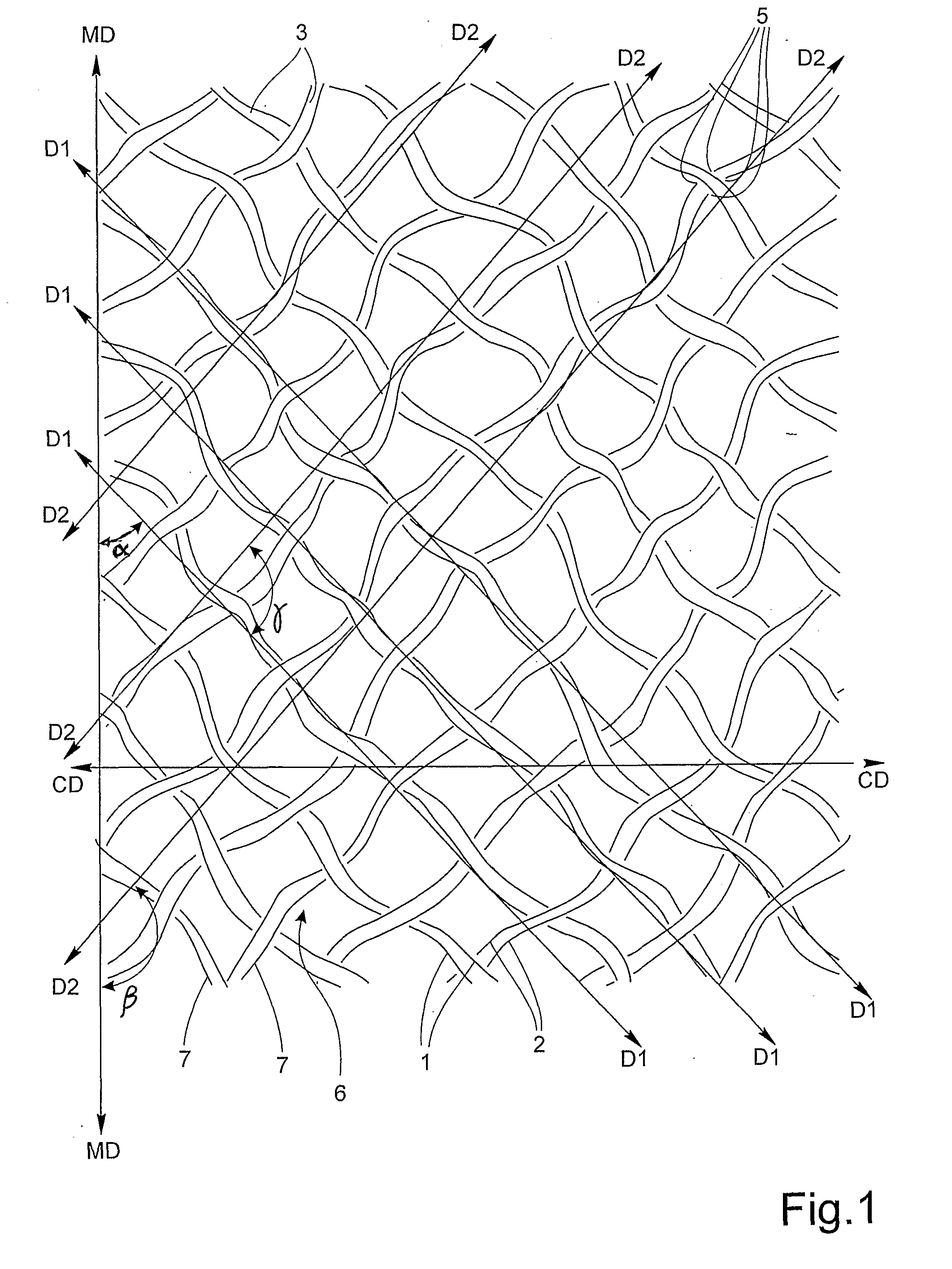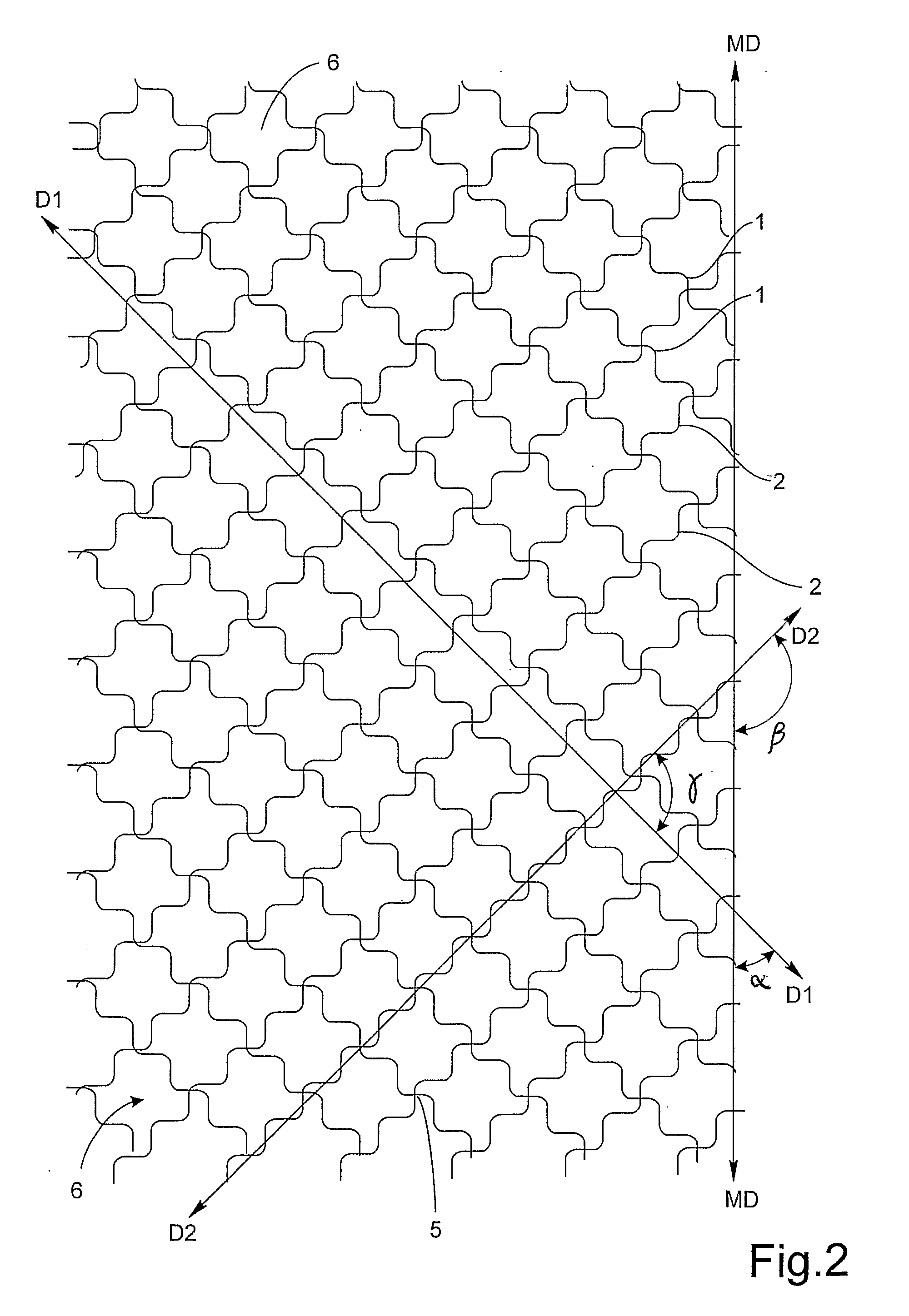Laminated paper article and paper web
a paper article and paper web technology, applied in the field of absorbent laminated paper articles, can solve the problems of unduly stiff paper articles, difficult folding and bringing to conform to a wiped surface, and affect the absorbency and handling of articles, so as to achieve the effect of improving the flexibility of laminated paper webs
- Summary
- Abstract
- Description
- Claims
- Application Information
AI Technical Summary
Benefits of technology
Problems solved by technology
Method used
Image
Examples
Embodiment Construction
[0045]With reference to FIG. 1 there is shown a section of an oversized bonding pattern according to the invention. The bonding pattern is typically continuously applied to a running web by means of a patterned roll in a bonding process.
[0046]The bonding process may be a printing process wherein the bonding adhesive is transferred from the pattern roll to the web prior to joining the web with another web. Such laminating processes are disclosed in WO 93 / 12936 and in WO 03 / 072344.
[0047]Alternatively, the pattern may be applied to a web by means of an embossing roll, followed by application of bonding adhesive to the embossed pattern and subsequent joining of the web to a second web. The joining of the webs can be made in a nested configuration as disclosed in WO 95 / 08671. In a nested laminate, the individually embossed plies are combined and joined with the raised portions of one ply aligned and nested into recessed portions of an opposite ply. Another configuration of laminated embo...
PUM
| Property | Measurement | Unit |
|---|---|---|
| length | aaaaa | aaaaa |
| angle | aaaaa | aaaaa |
| angle | aaaaa | aaaaa |
Abstract
Description
Claims
Application Information
 Login to View More
Login to View More - R&D
- Intellectual Property
- Life Sciences
- Materials
- Tech Scout
- Unparalleled Data Quality
- Higher Quality Content
- 60% Fewer Hallucinations
Browse by: Latest US Patents, China's latest patents, Technical Efficacy Thesaurus, Application Domain, Technology Topic, Popular Technical Reports.
© 2025 PatSnap. All rights reserved.Legal|Privacy policy|Modern Slavery Act Transparency Statement|Sitemap|About US| Contact US: help@patsnap.com



